Discover the rich tapestry of lesser-known indigenous flora within the Pangot located in the Naina Devi bird sanctuary 16 km from Nainital, Uttarakhand Himalaya.
This region is blessed with a variety of medicinal plants, many of which are used in the local traditional medicine. The local community also has a strong religious and cultural connection to these plants, using them for ceremonies and rituals. Explore the unique beauty of this diverse landscape.
In the monsoon season from May to September, I was roaming around the jungles of the Naina Devi Bird Sanctuary as a research intern for a jungle lodge birding lodge in the Pangot region.
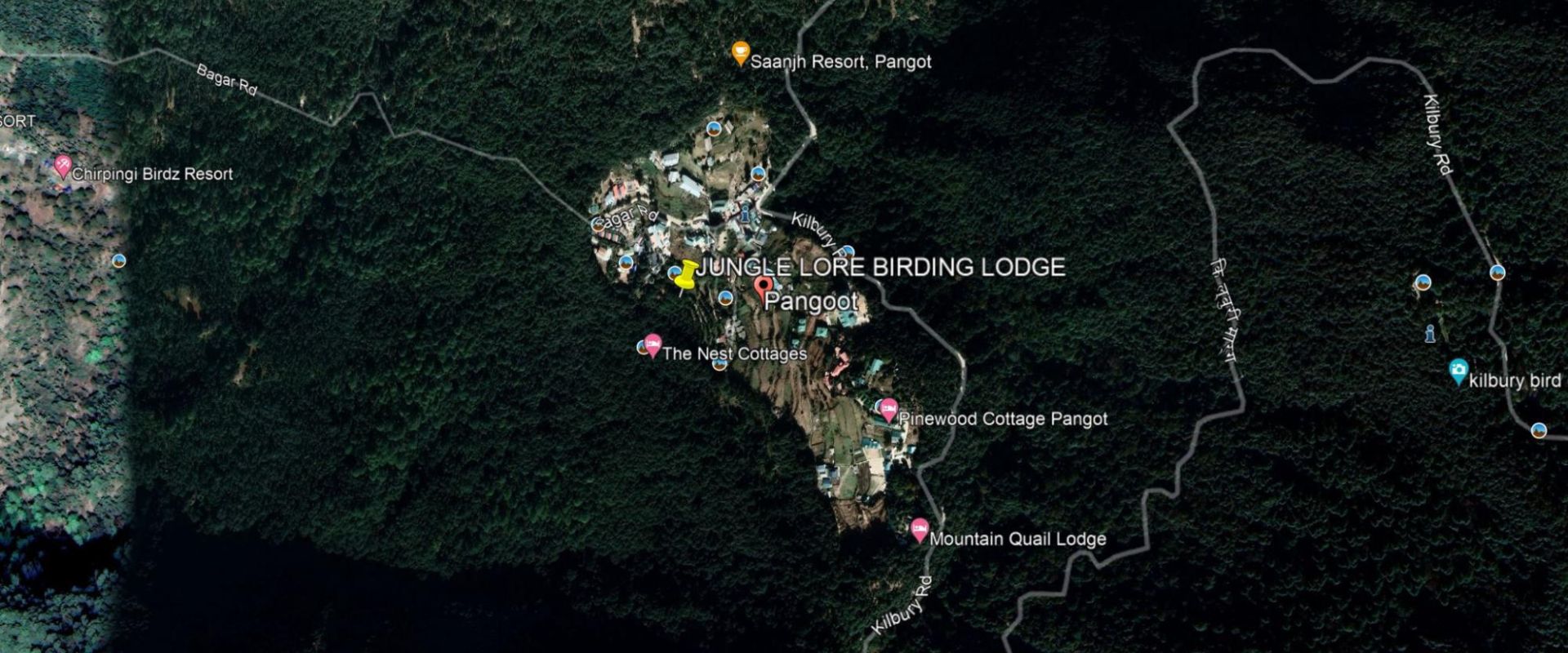
While exploring, I came across many amazing and very beautiful flowering plants which bloom only during the monsoon season. I was awestruck by their beauty, which is unique to this region.
Let us explore the unique beauty of this diverse landscape. Let us admire these beautiful endemic species. Let us experience the beauty of the blooming plants in the monsoon.

Himalayan musk rose
This is one of the most beautiful, fragrant, wild rose species which has white flowers consisting of 5 petals forming a single cup. I was trying to extract oil from it to make attar and succeeded, but only 3-4 drops, if you come here in May and June then you'll be overwhelmed with its mesmerizing fragrance. Local people also make chutney and saag from its friable bud and it is very tasty. I was fortunate enough to taste it.

Beautiful wild plant Begonia is found in moist stones, and also in garden pots of every house of this Pangot village, our lodge jungle lore also have these beautiful begonia. Himalrandia commonly known as Himalayan Randia or Gheri it is often found shorter because of goats browsing on it, this is used as a hedge plant for agricultural land.

Habenaria is a very beautiful orchid found in the Himalayas, from Pakistan to Nepal, at altitudes between 1500 and 2500 m. Habenaria belongs to the Orchid family and Rosacea belongs to the Ginger family, including 6 other plants that are found in the higher Himalayas make the Ashta Varga group of Ayurveda which is the life-rejuvenating group. They are common species of plants found in the monsoon season. They are popular for their beauty and resilience. Both of these species are important components of the monsoon ecosystem.

The species of Hypericum are well known worldwide for their economic values, rare Indigenous plants used as medicine, edible, fodder, fuel, and dye. due to multiple utility of the H. oblongifolium is facing high pressures. Also, I love its yellow color during the monsoon. It looks so serene in the Jungle.
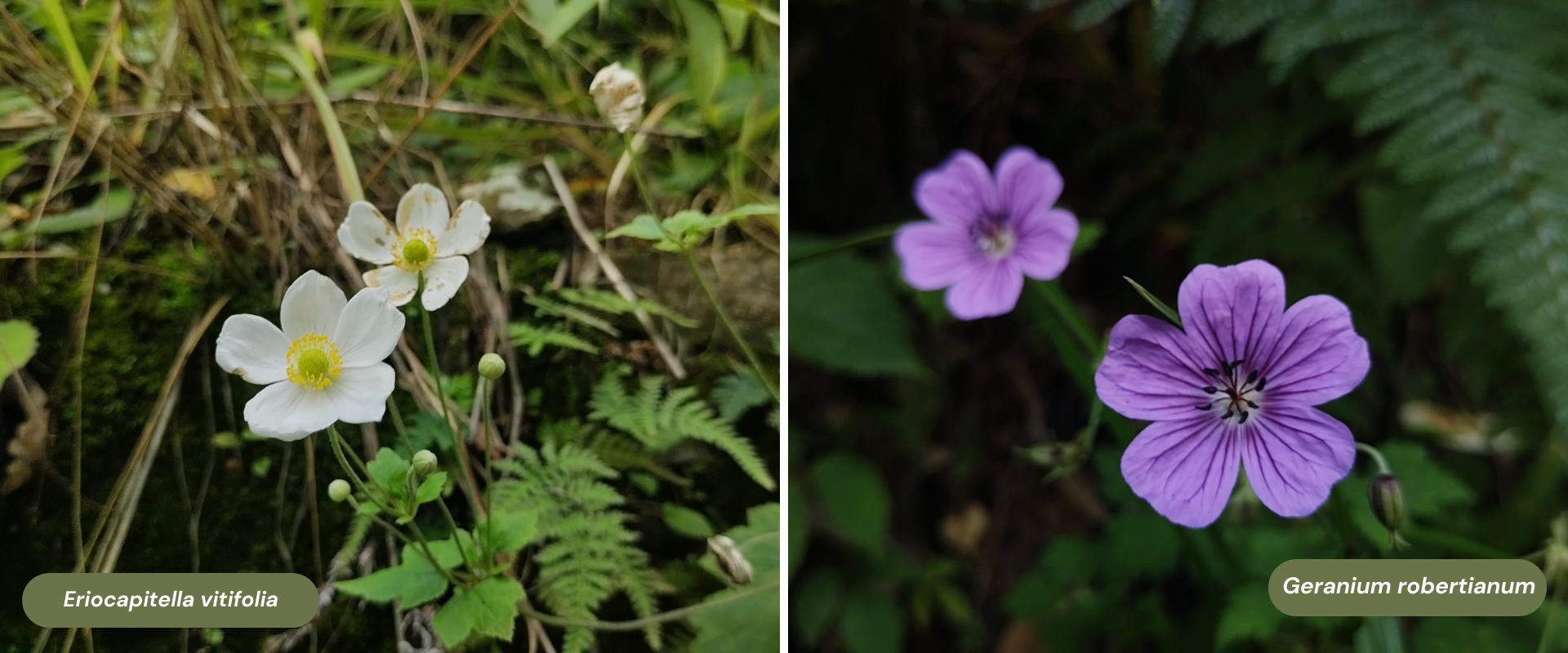
Eriocapitella vitifolia known as Grape Leaf Anemone, white flower that blooms in starting in the monsoon, and at the end of the monsoon it becomes like cotton. Geranium robertianum or Herb Robert widespread sprawling herb found in the Himalayan region from 900-3600 mt. elevation in May to June.
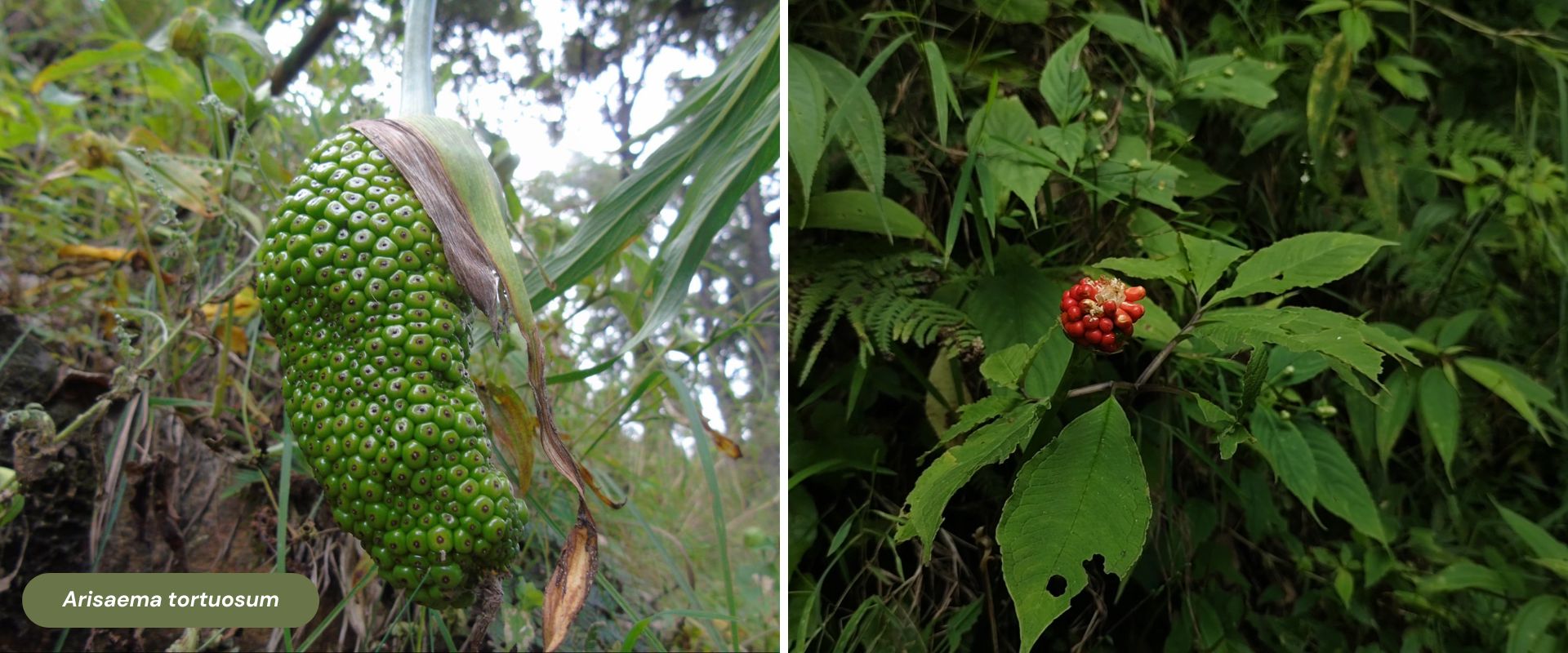
Arisaema tortuosum in Hindi plant is called sanp ka makka because of its snake-like appearance in the flowering stage. Native from the Himalayas and western China to southern India and Myanmar (Burma).
Hedychium spicatum commonly known as Spiked Ginger Lily It is also known as Shati in Ayurvedic classics, Kapoor Katcheri in Hindi, and here in Pangot it is called as van haldi. before 2016 this Naina Devi Bird Sanctuary was a community forest, according to local people they used to extract its roots for medicinal purposes. This plant is used for The essential oil obtained from the rhizomes of Hedychium spicatum and possesses significant antidiabetic activity. Approximately 30 rupees per kilogram are sold in the market near Kotabagh.

Cotoneaster integrifolius commonly known as Entire-Leaf Cotoneaster it is a small shrub, it has very nice white flowers and red seed that bloom in monsoon. Anaphalis margaritacea is commonly known as Pearly Everlasting. It has small white flowers and leaves that stay green all year. It is used as an herbal medicine to treat coughs and colds.
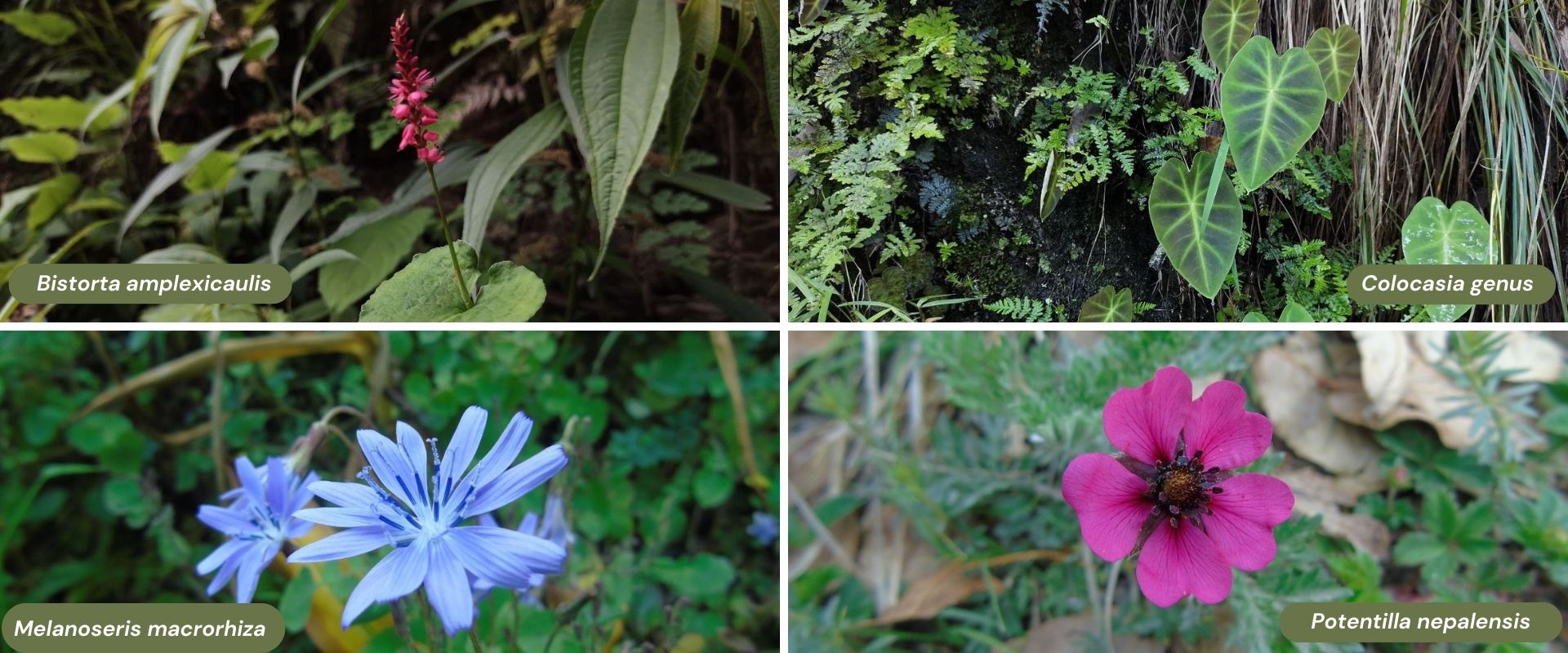
Melanoseris macrorhiza commonly known as violet dandelion. These beautiful violet flowers look like dandelions. These flowers were found only in the Himalayan region from 1800 - 4300 mt. elevation.
A bank of blooming crimson cinquefoil or laaljadi is one of the most beautiful sights in the Himalayas. In monsoon from 2000-2700 mt. Elevation.
Potentilla indica or mock strawberry is known for its sweet small strawberry Indian Strawberry is a very common wildflower found throughout the Himalayas, characterized by a strawberry-like fruit, and yellow flowers, at altitudes of 700-2500 m.
Erigeron multiradiatus is an Asian species of flowering plant in the family Asteraceae known by the common name Himalayan fleabane. Impatiens tricornis also known as Three-Horned Balsam is an annual, erect herb. flowering from May - September. Three-horned balsam is easily identifiable by its lovely yellowish color and in the Himalayan region.
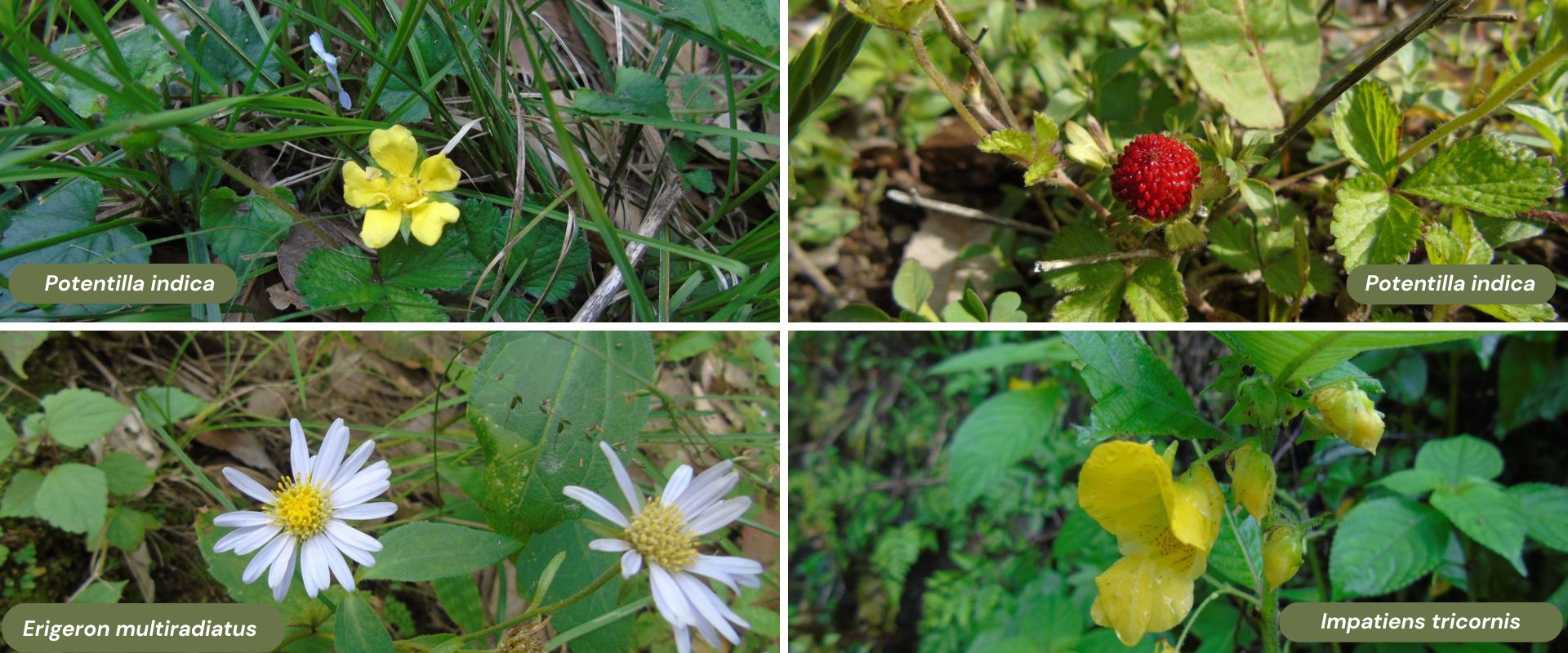
Thalictrum virgatum commonly known as Virgate Meadow Rue has tiny beautiful flowers which bloom during peak monsoon from June to August at elevations of 2000-4500 mt. Teucrium quadrivium is from Lamiaceae (Mint family) and. has a beautiful violet color flower that looks very different from other monsoon plants. Oenothera rosea known as Pink Evening Primrose, Rose Evening Primrose is an interesting wild-flower native to Central and South America. However, it is widely naturalized in India.
My exploration of Naina Devi's bird sanctuary during the monsoon of 2023 resulted in these beautiful plants. Many of these were also new to me and I was fortunate enough to see and photograph them.
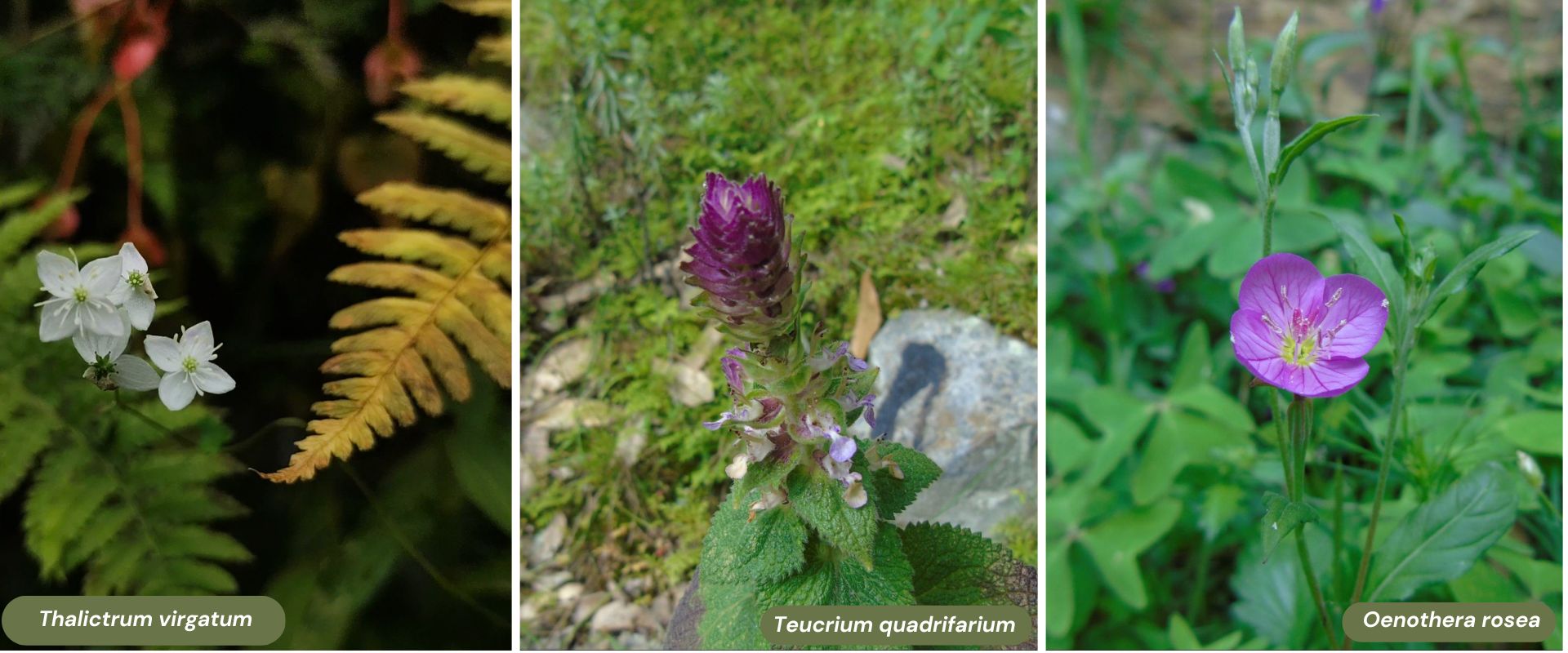
Report by:
Jagjeewan Singh Dhami
- Log in to post comments





